ТОП-5 бенчмарков для тестирования процессора
Бенчмарк CPU (тест производительности центрального процессора) — специальное программное обеспечение, предназначенное для проверки стабильности работы CPU и для сравнения полученных результатов быстродействия со всеми актуальными моделями процессоров.
Большинство пользователей современных ПК запускают тест производительности CPU лишь при покупке компьютера. Да, это безусловно правильно, если вы проверяете, насколько приобретаемый компьютер соответствует ожиданиям и насколько он стабильно работает. Особенно это актуально, если процессор или системный блок покупается не в магазине с гарантией, а с рук по объявлению. Но кроме этого, полезно погонять бенчмарком процессор и гораздо позже после покупки.
Ведь тест покажет не только заветные «попугаи», но и позволит посмотреть насколько рабочие и экстремальные температуры CPU соответствуют рекомендованным. Ведь со временем процессорный вентилятор может перестать давать достаточное количество оборотов для охлаждения радиатора, да и термопаста между радиатором и процессором может подсохнуть, и деформироваться. Что в итоге будет вызывать перегрев процессора и сделает его неработоспособным. Notagram.ru специально отобрал лучшие бесплатные бенчмарки для тестирования CPU.
AIDA64 Extreme Edition
Это профессиональное ПО, благодаря которому осуществляется мониторинг рабочего процесса видеокарты. Ключевая особенность —можно провести диагностическое исследование таких составляющих ПК, как материнская плата, оперативная память, центральный процессор, блок питания, а также жёсткий диск. Можно найти неполадки, сбои в самом устройстве через поисковую систему.
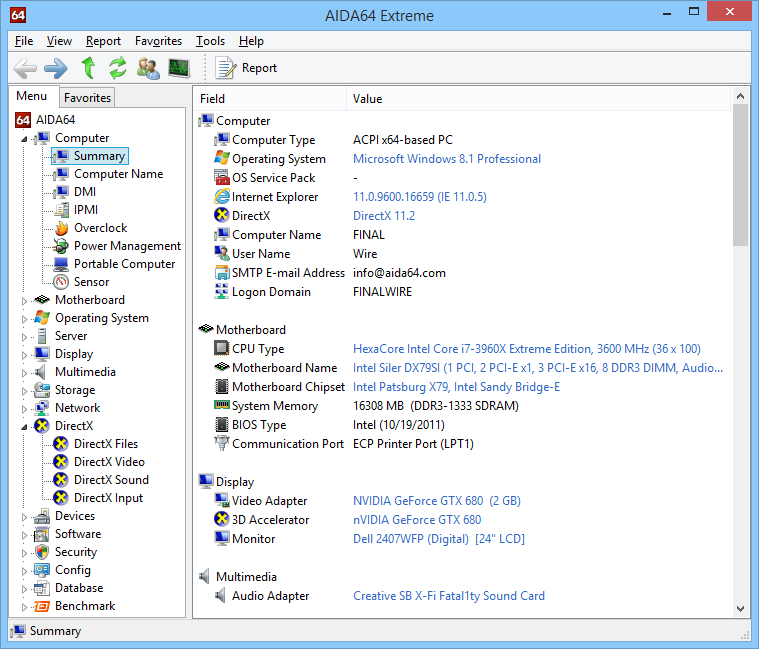
Есть возможность вычислить частоту кадров в секунду (FPS) в 3D-играх и приложениях. Доступно вычисление скорости, с которой вращаются вентиляторы, температурного показателя и напряжения графического адаптера. Важный момент — такое тестирование займёт до 10-ти минут. Очень жаль, но бесплатно пользоваться приложением можно не более одного месяца, далее за лицензионный ключ придётся заплатить 40$.
Возможности AIDA64 Extreme Edition:
- Отслеживание установленных драйверов;
- Проверка, в каком положении находятся модули памяти;
- Исследование, насколько софт сочетается с Windows 10, 8.1, 8 и 7 (32-bit, 64-bit);
- Просмотр температурного графика, скорости рендеринга GPU;
- Обработка материнской платы на чипсете Intel Cannon Lake;
- Выявление разных неполадок всех комплектующих ПК;
- Вывод полноценных сведений про все аппаратные составляющие компьютера;
- Отличная сочетаемость практически с любой нынешней видеокартой NVIDIA и AMD Radeon;
- Оперативное выявление любого сбоя, касающегося аппаратной части.
ТОП-3 лучших бенчмарк-программы для ГП
FutureMark Suite
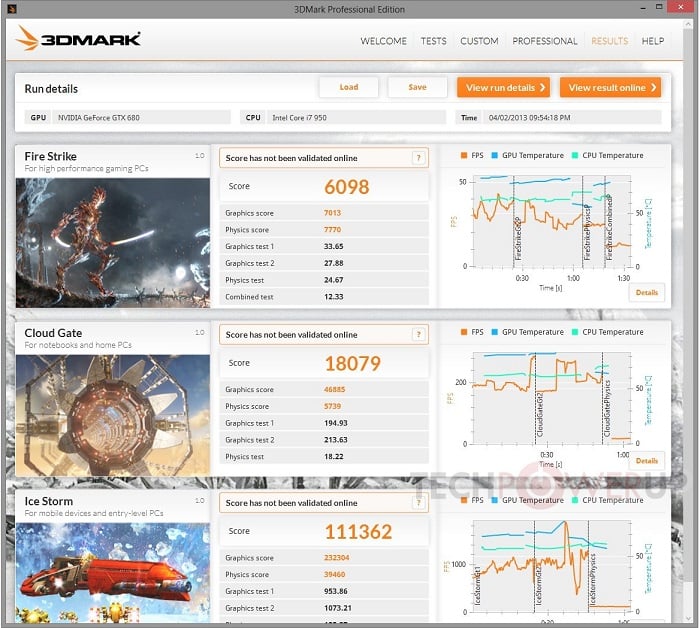
FutureMark Suite — бенчмарк-программа для графических ускорителей действительно «крупного калибра». Верно, она является частью дорогостоящего 3DMark, тем не менее непосредственно сам FutureMark полностью бесплатен. Разумеется, без 3DMark вы лишаетесь множества крутых функций, но для бенчмарка видеокарты хватит и того, что есть. Внимание! FutureMark Suite включает в себя бенчмарки на DirectX 12, что важно для многих современных компьютеров.
MSI Afterburner
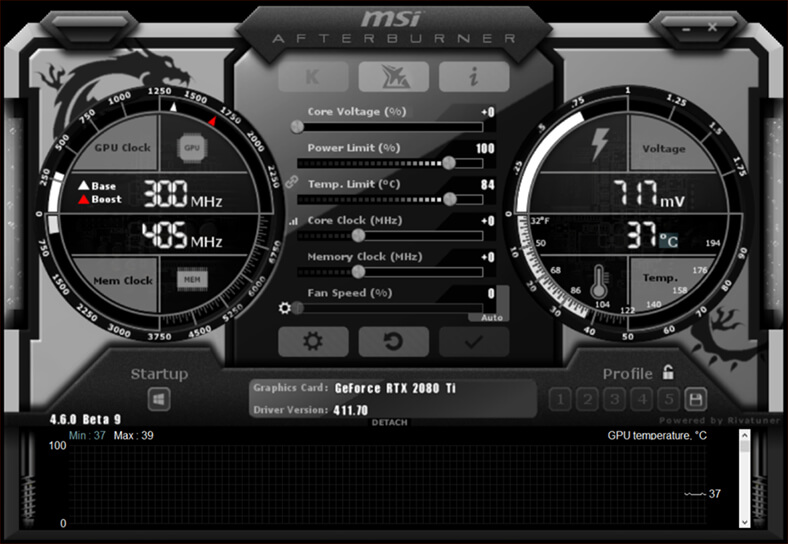
MSI Afterburner — самым популярный выбор среди геймеров, которые хотят не только провести бенчмарк своей видеокарты, но и немного подразогнать ее. Программа далеко не новая — ее успели проверить на деле миллионы пользователей по всему миру! И не переживайте о том, что у вас видеокарта не от MSI: утилита является универсальной и подходит под ГП всех производителей.
GPU-Z — двоюродный брат CPU-Z. Удивительно, но GPU-Z был разработан совершенно иными разработчиками, несмотря на визуальное сходство. Название видеокарты, технологический процесс, количество транзисторов, разрядность шины и многое другое — вот что вам будет доступно в GPU-Z.
Ну и, понятное дело, у программы есть своя функция бенчмарка. Более того, GPU-Z способен создавать резервную копию BIOS видеокарты, что будет полезно для всех пользователей, которые любят копаться в настройках своего ГП. Как все другие утилиты в списке, GPU-Z универсален и подходит для видеокарт от NVIDIA, AMD и Intel.
Виды бенчмарков и их работа
Сначала рекомендуется разобраться в вопросе, касающегося тестирования комплектующих. Для некоторых это пустяк, на который даже внимания не требуется обращать — он не требует углубления в тему, но все же рекомендуется поразмышлять.
Оценивается мощность во время работы компонентов с помощью силы нагрузки на ядра или память: ОЗУ, CPU, GPU. Чем лучше пройдет тест элемент, тем большую оценку он заработает в результате. Некоторые имеют настолько слабые характеристики, что тест пройти невозможно. А иногда попадаются такие, что результат тестирования с «заоблачными» цифрами.

Стоит отметить, что существуют два основных типа тестов производительности:
Так как популярна тематика компьютерных игр, разработчики добавляют специальные тесты видеокарт, процессоров и оперативной памяти — в общем, всей системы, чтобы можно было понять, сколько FPS будет выдавать игра на тех или иных настройках графики.
Иногда такая функция ошибается, ведь пользователи всегда могут подкорректировать код, отвечающий за разрешение и детализацию. Поэтому в игре может быть высокая производительность, но в бенчмарках — низкая. Или наоборот. Потому можно иногда только проверять мощность комплектующих с помощью таких функций.
Есть отдельные программы, отвечающие за синтетические тесты GPU и CPU. Там сразу выводятся данные о деталях, которые подвергаются проверке. Принцип действия у них совершенно разный — одни заставляют обрабатывать графику, другие ориентированы на переработку «тяжелой» информации.
Обычно последней является изображение в высоком разрешении и с «сочной» цветопередачей. Здесь уже система оценки не такая, как в играх — вместо FPS показываются баллы, а в некоторых возможно сравнение с другими компонентами. Это удобнее, ведь можно подобрать комплектующие для улучшения характеристик системы в целом.
В остальном принцип действия один и тот же, а различия касаются лишь в представлении итогов. Это может быть FPS, если обрабатывается сцена из какой-либо игры, или же баллы, когда производится простая нагрузка на компоненты. Пользователь определит эффективность комплектующих, когда увидит результаты и сравнит с теми, что получили другие процессоры или видеокарты.
Простые и удобные бенчмарки для Ubuntu и всех ОС
Графический ускоритель
Наш подопытный ноутбук HP Pavilion Gaming 15 оснащен дискретной графикой Nvidia GeForce GTX 1650 Ti и обойти стороной её потенциал будет некорректно. К счастью, долго искать альтернативу 3DMark не придется, ведь пакет бенчмарков Phoronix уже содержит искомый ответ.
А точнее, наводку Unigine Heaven образца 2009 года. Не самое свежее решение, однако, компания Unigine давно производит графические движки под коммерцию. А бенчмарки выпускает скорее в качестве рекламной продукции. Именно это нам и требуется, ведь игровые движки с физической моделью умеют поддать жару всем компонентам системы. И современный ассортимент Unigine включает искомые кандидатуры: бенчмарки Valley 2013 года и Superposition 2017 года.

Бенчмарк Unigine Valley смотрится на одном уровне с игрой The Witcher 3: Wild Hunt
Главное, что оба тестовых пакета доступны не только под Ubuntu, но и пользователям Windows, что позволит сравнить реальные отличия в производительности всей системы и особенно графики. Бенчмарк Valley доступен не только под Windows и Ubuntu, но и под OSX, и там его тоже запустим.
С поиском бенчмарка для центрального процессора все еще проще, если отталкиваться от мультиплатформенности, как основного требования. Тут нет конкурентов Geekbench 5, и объективных причин искать альтернативы не так много. Тот же Cinebench R23 весьма специфичен по характеру нагрузки на систему, плюс не позволит сравнить результаты с мобильными платформами. А Geekbench доступен на Android, Windows и Ubuntu, плюс на многих других популярных ОС для портативных устройств и настольных решений, включая серверное оборудование.
SSD–накопитель
Традиционно на Windows 10 мы рекомендуем использовать простую общедоступную утилиту CrystalDiskMark, которую удобно использовать в сочетании с CrystalDiskInfo для мониторинга показателей S.M.A.R.T. под нагрузкой. Если вы используете твердотельный накопитель Kingston, рекомендуем установить наше фирменное приложение SSD Manager, в котором можно контролировать исправность диска и обновить прошивку контроллера в пару кликов. Ознакомиться с актуальными версиями прошивок можно по этой ссылке.

Оперативная память
С проверкой оперативной памяти в среде Windows 10 выбор многих пользователей останавливается на проверенной временем AIDA64. Удобный и простой в освоении инструмент для просмотра информации об аппаратной начинке компьютера, он также доступен на смартфоны с Android и iOS на борту. Во вкладке бенчмарков доступна утилита проверки скорости кэша и RAM, вполне корректно указывающая фактические значения в параллели от заявленных цифр.
Но в случае с Ubuntu вариант скачать AIDA64 не подойдет, ввиду отсутствия этой программы для настольной Linux. Альтернатив в наличии не так много, к тому же выдаваемые некоторыми значения, далеко не всегда похожи на корректные значения. Например, результаты измерений в консольной Sysbench никак не получится коррелировать с тем, что выдает AIDA64. Гораздо ближе к правде результат выдает Memtest86, доступ к которому доступен через терминал, вводом команды установки:
sudo apt-get install mbw
Виды оценки быстродействия ПК
Чтобы проверить производительность компьютера и дать ей субъективную оценку, руководствуйтесь, прежде всего, собственными ощущениями.
Ваш ПК или ноутбук достаточно производителен, если:
- Он быстро загружается и завершает работу операционной системы.
- Установленные приложения и игры запускаются без долгого ожидания.
- Вы можете использовать одновременно столько программ, сколько требуется (в рамках разумного), работать с файлами любого объема и не испытывать дискомфорта от задержек. Замедления из-за периферийных устройств или низкой скорости Интернета не в счет.
Невыполнение хотя бы одного из этих условий указывает на недостаточную мощность компьютера для конкретных задач. Но это не всегда означает, что аппарат слабый. В сравнении с другими он может быть гораздо мощнее и быстрее.
Производительность компьютерной техники оценивают двумя различными подходами:
- По соответствию возможностей железа и софта задачам, для которых используется или предназначается устройство.
- По сравнению с эталоном (бенчмаркинг). За эталон берется девайс с условно «идеальным» быстродействием при выполнении лабораторных операций (синтетических и полусинтетических тестов), приближенных к реальной работе на ПК. Бенчмарк-тестирование показывает, насколько проверяемый компьютер шустрее или, наоборот, медленнее эталонного. В качестве бенчмарков используются специально предназначенные для этого программы, а также обычные приложения и игры, нагруженные тестовой работой (воспроизведением роликов, скриптов и т. п.). Результаты проверки оцениваются по количеству набранных баллов или реальным значениям, например, скорости обмена данными между процессором и памятью в Mb/s.
Оценка производительности может проводиться как для отдельных устройств, например, только процессоров или жестких дисков, так и комплексно для всей системы. При комплексной оценке уровнем быстродействия ПК принято считать средний показатель всех его комплектующих, а в некоторых случаях — самого слабого звена.
Звуковая карта
ASIO latency check Test Utility
RightMark Audio Analyzer
PassMark SoundCheck позволяет убедиться в том, что аудиокарта может воспроизводить звук на тех или иных частотах и записывать его c определенной частотой дискретизации. Программа умеет проверять динамики и дает возможность установить их частотный диапазон посредством подачи тестовых сигналов. Сгенерированные простейшие аудиосигналы (например, синусоида) направляются на вход звуковой карты для оценки искажений, добавляемых при цифрово-аналоговых преобразованиях. Для аудиосистем с окружающим звуком есть специальный отдельный тест.
ASIO (Audio Stream Input/Output) – это протокол аудиокарты, который предоставляет приложениям для работы со звуком прямой доступ к аудиопотоку. В результате обеспечиваются минимальные задержки, что очень важно при записи музыки. Например, сигнал с накладываемыми в реальном времени эффектами будет в большинстве случаев воспроизводиться со значительной задержкой без использования ASIO или при неверной настройке этого протокола. ASIO latency check Test Utility позволяет измерить отставание с точностью до 0,5 мс; его приемлемый уровень находится в диапазоне 10–30 мс – при бóльших значениях данного параметра человек уже будет замечать задержку. Для ее измерения аудиовход звуковой карты подключается к ее же выходу, после чего определяется время между поступлением сигнала и его появлением на выходе. Путем изменения параметра Buffer Size можно уменьшать отставание и добиться максимальной производительности аудиокарты при обработке звуков в реальном времени.
RightMark Audio Analyzer применяется для проверки любых звуковых устройств, в том числе и аудиокарт. Для этого проигрываются тестовые сигналы, а также записываются и анализируются частоты, поступающие на микрофон. В платной версии поддерживается диагностика ASIO.
Проверяем жесткие диски и SSD
Если вы столкнулись с фризами в играх, то причина не всегда кроется в ОЗУ, процессоре и видеокарте. Зачастую жесткий диск, на котором установлена игра, имеет сбойные сектора. Проверить состояние винчестера можно с помощью программы CrystalDiskInfo. Она отобразит суммарную информацию о вашем HDD. Например, температуру, общее время работы, число включений, техническое состояние и ошибки. Реинкарнировать накопитель данный софт не умеет, поэтому следует воспользоваться другой утилитой.
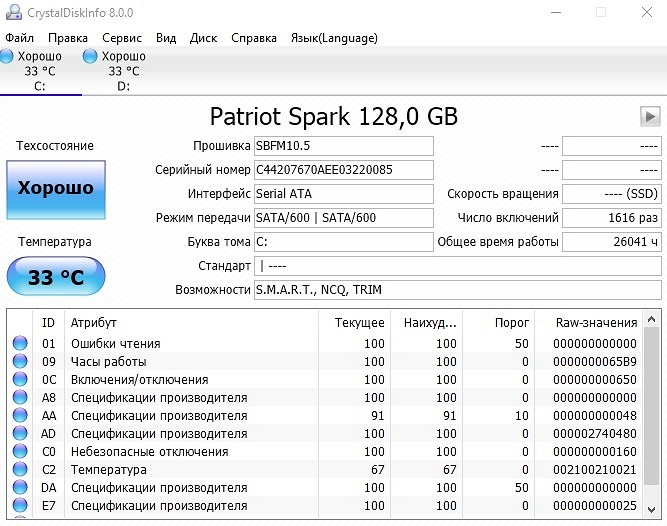
Victoria — более сложное и профессиональное решение, которое предназначено для лечения жесткого диска. Программа имеет множество алгоритмов для исправления бэд-блоков и умеет работать как в интерфейсе операционной системы, так и в DOS-режиме. С её помощью, кстати, можно осуществить полное стирание информации, чтобы ее невозможно было восстановить. Пользоваться софтом следует с осторожностью.
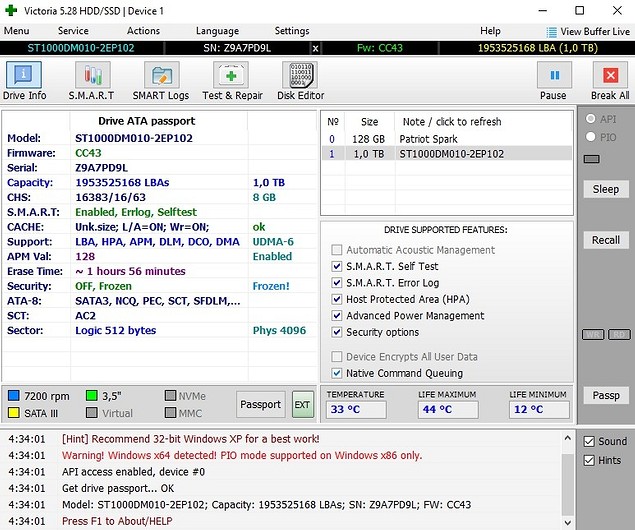

Part 2: Programs to Benchmark and Stress Test Your Hardware
You’ve now got all the monitoring tools you need, but how do you know if your device is performing exactly as it should do? That’s one of the reasons why we benchmark.
There are lots of benchmark programs out there, and plenty of games that have a benchmark feature built into them (some times but not always we use those). Games are great for stress testing your GPU, but for this article we’ve picked 13 pieces of software that are commonly used in hardware reviews or that provide additional testing features that games can’t do.
We’ve not included programs that can monitor and log the frame rate of a game, such as FRAPS or MSI’s Afterburner, as these don’t directly test the computer; however we’ll look at them in a follow up article.
Sandra 20/20
Download Now from TechSpot | Website: Sandra 20/20
To start the benchmark section, we’re using another long running system analyzing tool: SiSoft Sandra. On face value, it might seem to offer just the same features as HWinfo and AIDA64, but unlike those summary programs, Sandra comes packed with a host of benchmarking tools.
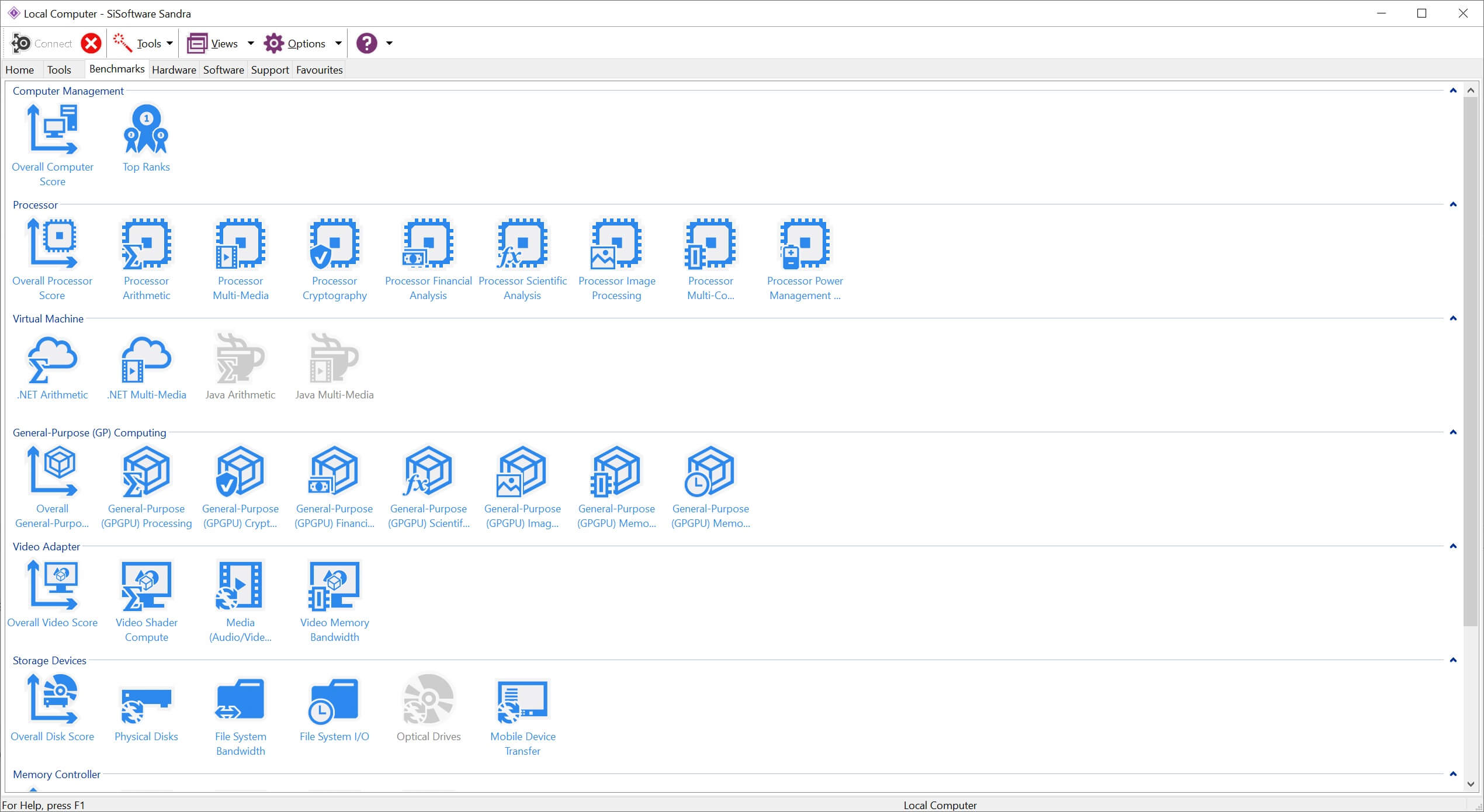
The list of tests is comprehensive, but most of them are specific to a particular task, such as the mathematics involved behind image processing. Fortunately, there is an overall computer test but a word of caution: it runs for a long time, and your computer may well bug out (screen switches off, RGB fans glitch, etc) during the test, as it’s really intensive.

The results page will compare the findings against other benchmarked platforms, as well as provide a breakdown of the individual facts and figures. For system administrators and PC builders, Sandra covers all the bases; it’s not quite so friendly towards the general PC user though.
Sandra is only available for Windows, but the ‘Lite’ version is free and comes with a wealth of tests. The upgrade price to unlock everything is currently a rather steep $69.99, but it can be installed on up to 5 different PCs. There are more versions for professionals and various industry sectors (which require multiple licences and remote monitoring), but their prices are significantly higher, ranging from $199.99, all the way up to $2,195.
PCMark 10
Download Now from TechSpot | Website: PCMark 10
If you’re looking for a more general benchmark that tests your Windows PC in a variety of common situations (office applications, video streaming, gaming, etc), then check out PCMark 10. Originally made by Futuremark, in Finland (later acquired by UL), the program has been around in various revisions since 2002.
There is a free ‘Basic’ version that runs a single, overall benchmark test; unlocking the rest of the tests and other features will set you back $29.99; if you’re after even more tests (such as battery life, storage performance, and specific application testing) and greater control over the program, then you’ll need to spend $1,495 every year for the ‘Professional’ edition.
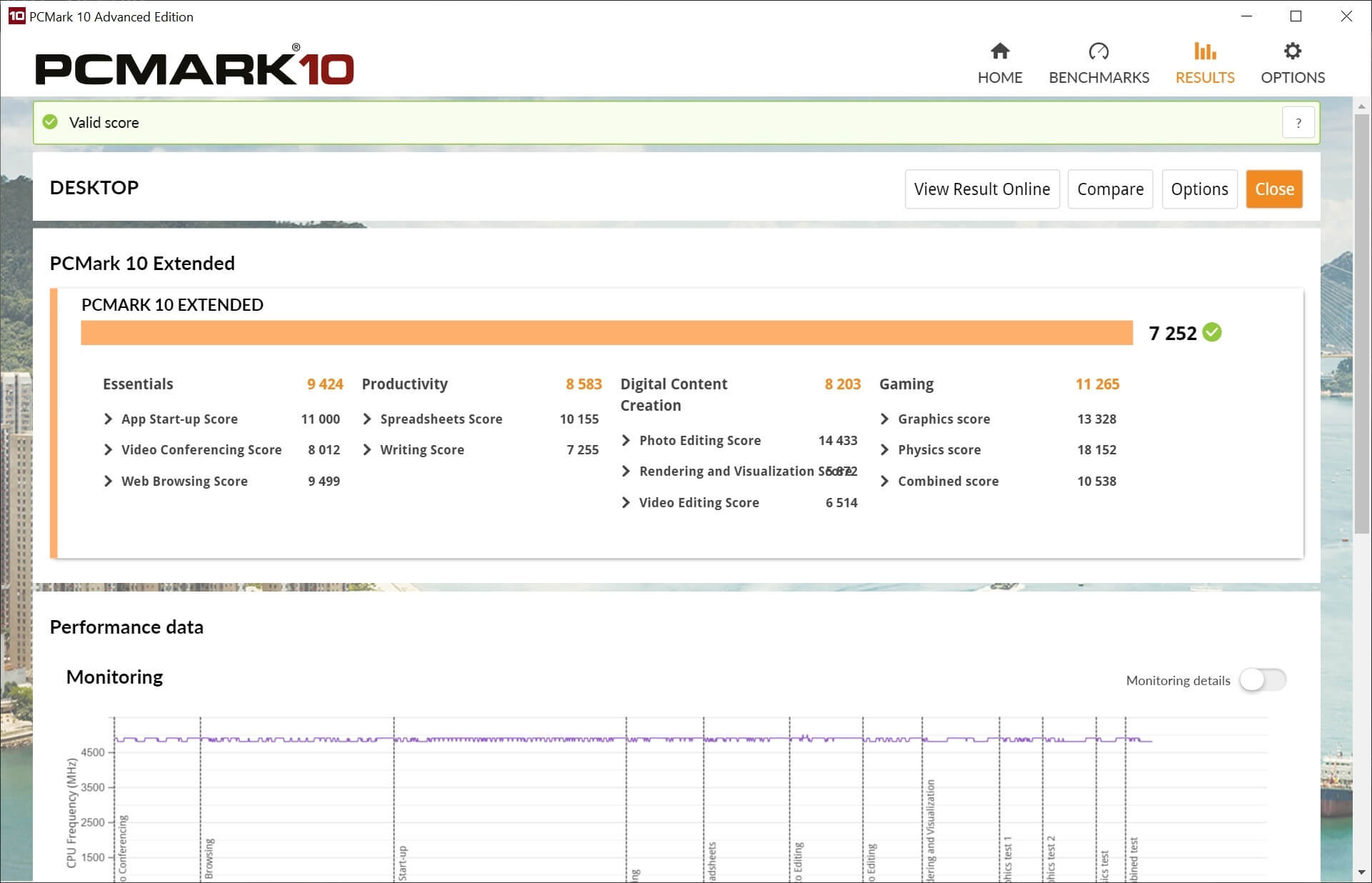
PCMark monitors various things during the test, such as CPU load and temperature, and the results can be uploaded to UL’s database, for comparison with other systems. There is a separate version of PCMark for Android devices.
3DMark
Download Now from TechSpot | Website: 3DMark
Another UL benchmark tool and one that’s even more popular, 3DMark appeared nearly 22 years ago and has been one of the standard ways of testing graphics cards — although games have taken over this role, for the most part. This is because it focuses on running intensive 3D graphics loads, using the latest rendering technology supported by modern graphics cards.
There are separate versions for Windows, Android, and iOS, and it comes in a free ‘Basic’ version that has 4 standard tests. The $29.99 ‘Advanced’ product gives you all of the tests, including a looped Stress Test and so-called Feature Tests that analyze certain hardware or rendering capabilities, and the purchase allows you to customize the graphics settings.
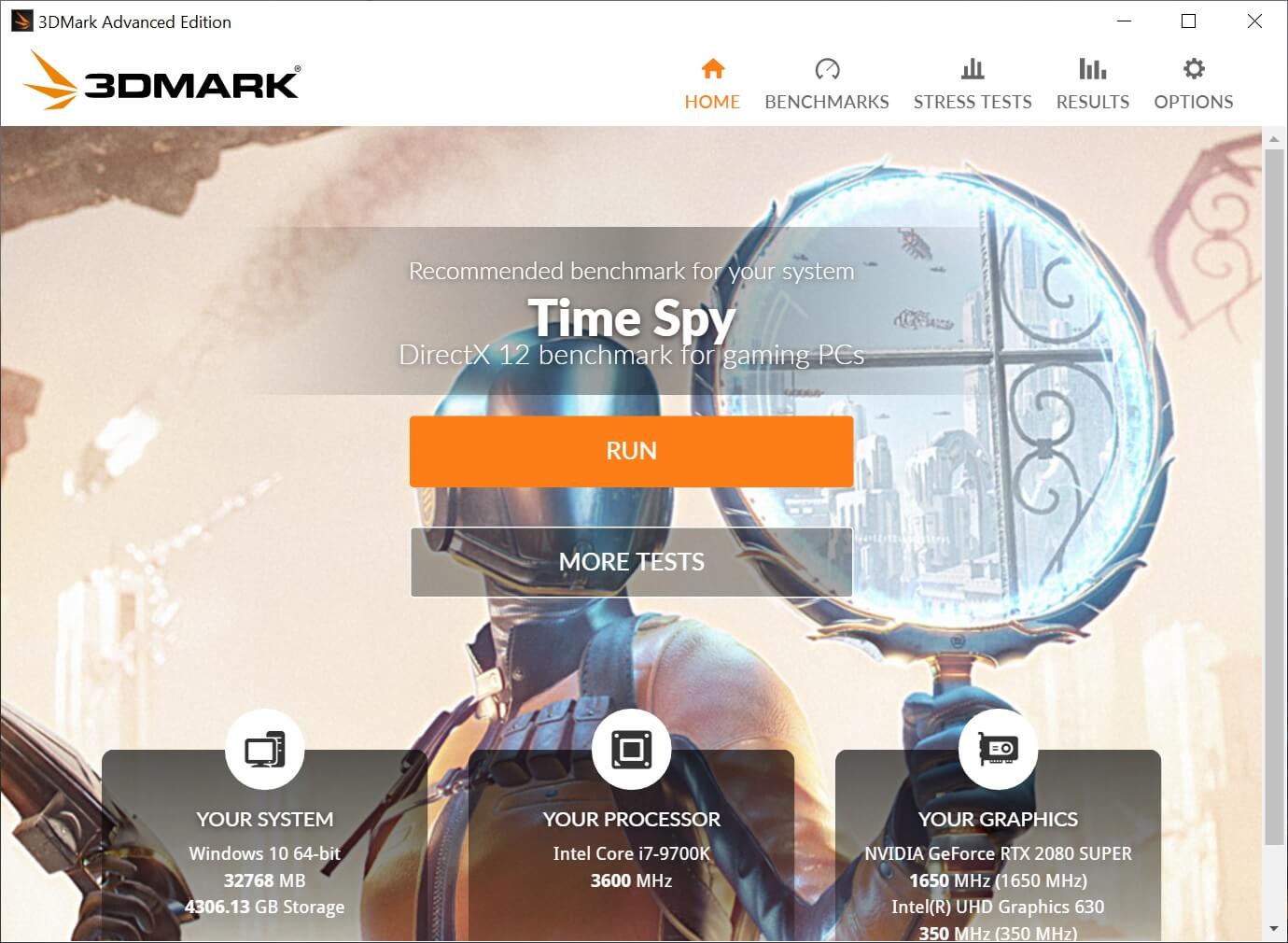
The ‘Professional’ edition of 3DMark, aimed at industry specialists, provides greater control over automation and test configuration, also costs $1,495 per year but the only extra test you get is an image quality tool!
3DMark also allows you to upload to a database and compare your PC against other configurations.

3DMark is still popular with the overclocking community and the top scores in the database are often PCs cooled with liquid nitrogen, all clocked to extreme levels (e.g. a 28 core, 3.8 GHz CPU pushed to 5.8 GHz).
Cinebench
Download Now from TechSpot | Website: Cinebench
Next up is another classic benchmark — the Cinebench tool is actually a very cut down version of a rendering program called Cinema 4D, by Maxon. When you run it, the app uses the CPU to produce a single image, but all done with the latest ray tracing techniques.
The GPU isn’t used in the test, other than to send the output to the monitor, but it’s great for analyzing how well a CPU manages threads and memory. Cinebench can be configured to render the scene using a set amount of threads, starting with just 1 (essentially just one core of the CPU) and then all the way up to 256.
Even if the processor doesn’t support that many threads, the benchmark will still run, as each string of instructions processes a small area of the image — in other words, using more threads just means each rendered section is smaller.
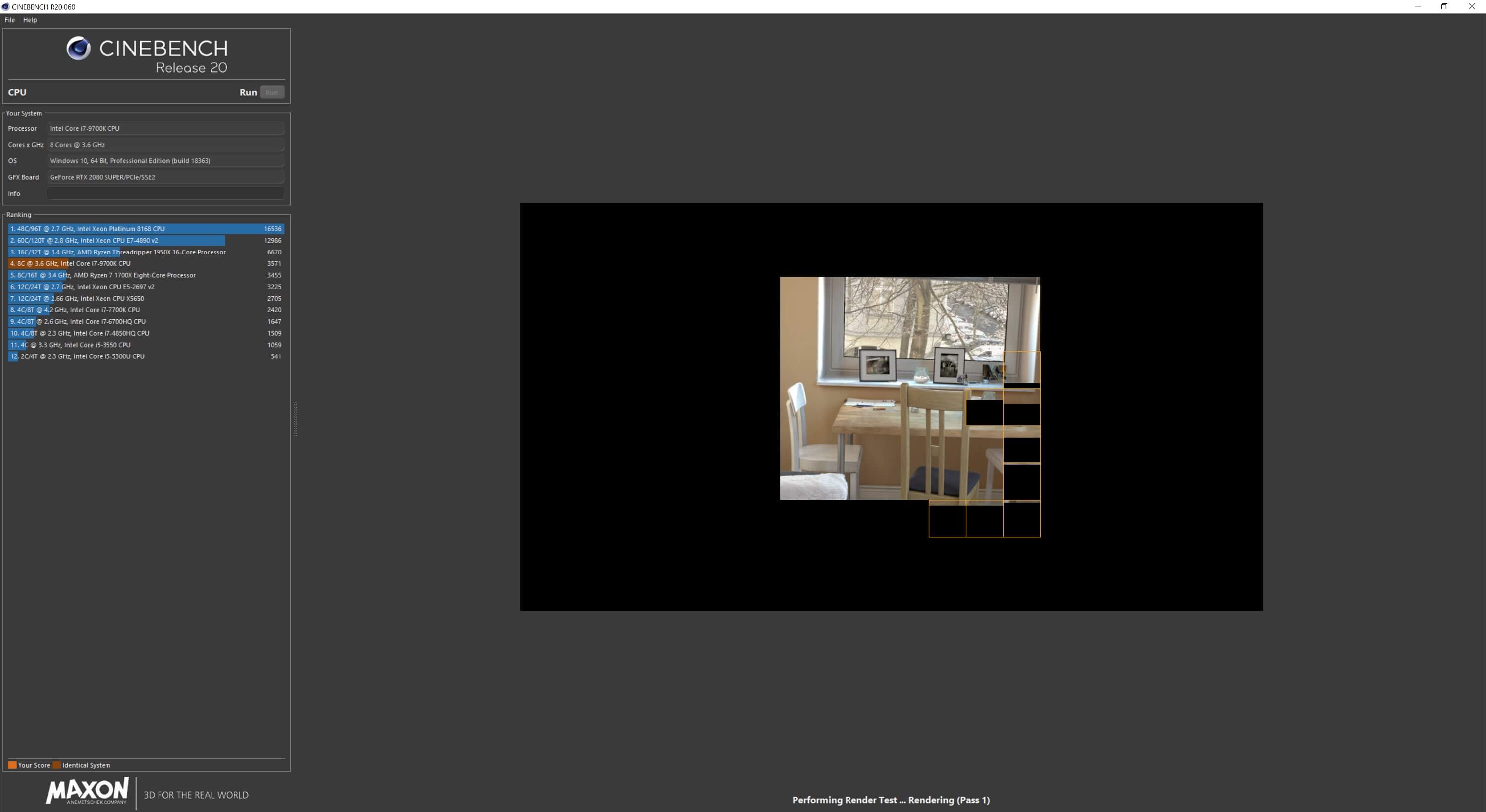
You’ll find Cinebench results in just about every CPU review on the web, but be aware that the older versions don’t run the same test, so the results aren’t comparable. While it’s not a detailed workout for your whole system, there’s nothing better than watching your new multicore processor rip through the scene. It’s totally free, and available for Windows and macOS.
Another popular CPU benchmark that is based on rendering tasks is Corona. This application is based on the Corona Renderer and lets you compare the performance of your CPU against a big results database.
Basemark GPU
Basemark might seem to be a bit of a 3DMark clone (and part of the development team are ex-Futuremark employees) but this graphics test has an important advantage over its Finnish rival: there are versions for Windows, Linux, MacOS, Android, and iOS. So if you’re a professional hardware tester or you just have lots of gear to check out, Basemark GPU might just suit your needs.

For a single rendering test, it’s quite a large download at just under 1 GB; and if you want to explore how well your graphics card handles different types of texture compression, there’s even more to pull down from their servers. Basemark supports 3 different graphics APIs: DirectX 12, OpenGL, and Vulkan, which makes it unique in the market it competes in.
There’s a free version for all platforms, but if you want to unlock the ability to automate the test or configure them outside of what Basemark have set, then you’re probably out of luck. That’s because those features are only available in the Corporate edition and there’s no public price tag for that!
Download Now from TechSpot | Website: OCCT
If you’re into overclocking or you’ve just built a new system and you want to test how stable it is, then you’ll want a program to stress test your computer. OCCT (Overclock Checking Tool) fits the bill very nicely, and although it’s only for Windows machines, it can monitor a variety of sensors and hardware levels as it’s running.
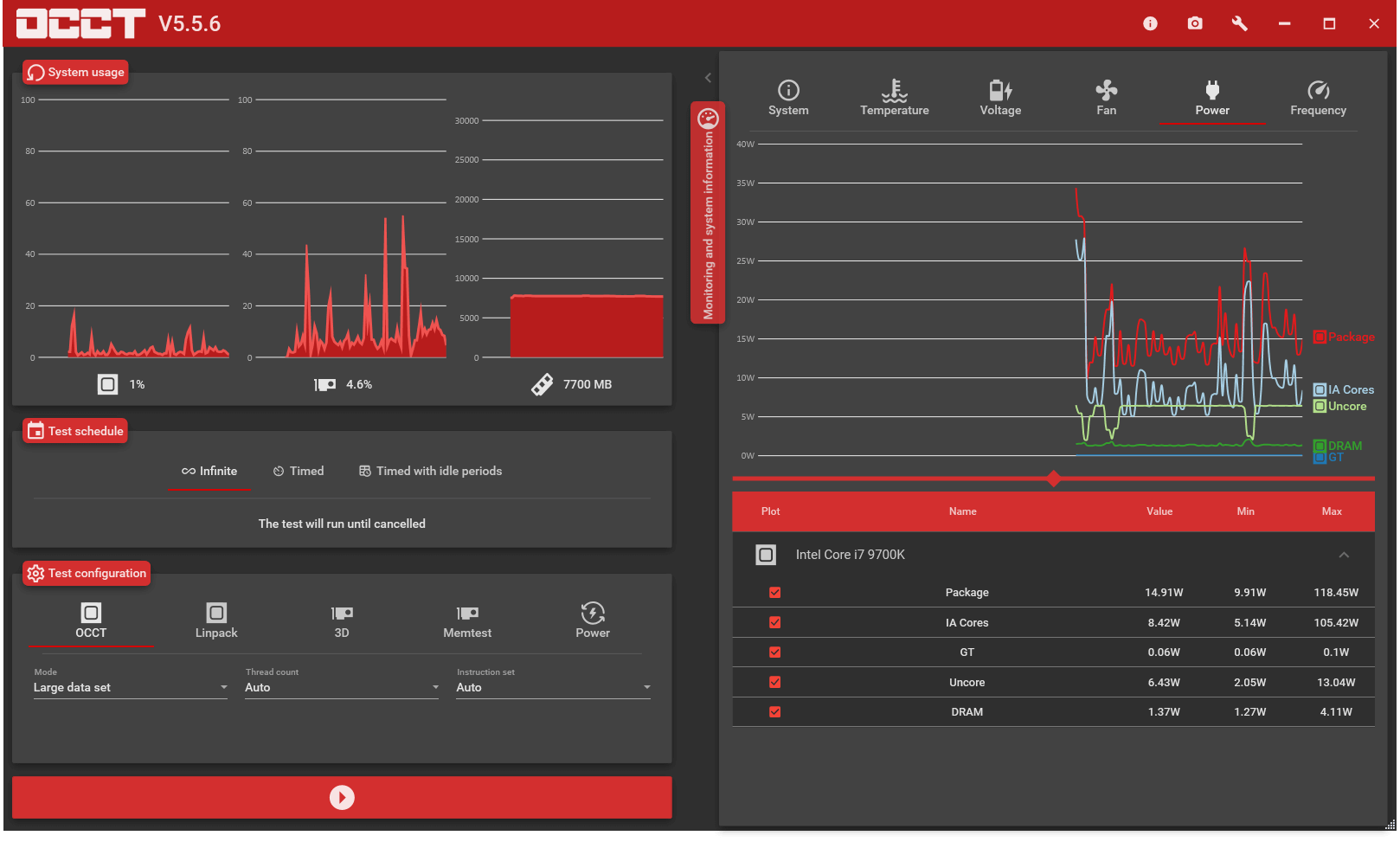
There’s not a huge range of tests in the app, but they do exactly what they’re supposed to: load up the CPU, GPU, or RAM and give them a good workout. OCCT is free for general use, although it does ask you for a $1 to get rid of the reminder window, every time you run a test. However, that buck will only last for a month: the makers of the program charge $10 for a year, or $15 for eternity, to do the same thing.
Blender Benchmark
Download Now from TechSpot | Website: Blender Open Data
Blender is an open source software for 3D modeling, rendering, animation and post-production. The benchmark is based on this software and was developed by the project’s team to collect hardware test results and make comparisons between system hardware, installations, and to assist developers to track performance during Blender development.
The Blender benchmark is available for Windows, Linux and macOS.

The benchmark can be run online or offline. The benchmark runs Blender and renders production files, with the option to upload your results to the Open Data portal on blender.org.
Geekbench
Download Now from TechSpot | Website: Geekbench
Another popular benchmarking tool is Geekbench, by Primate Labs. This is has also been around for a long time, but in the past, it’s also had its fair share of negative criticism, notably by key industry figure Linus Torvalds. That said, it was one of the very few testing programs that’s available for all 5 major platforms: Windows, Linux, MacOS, Android, and iOS.
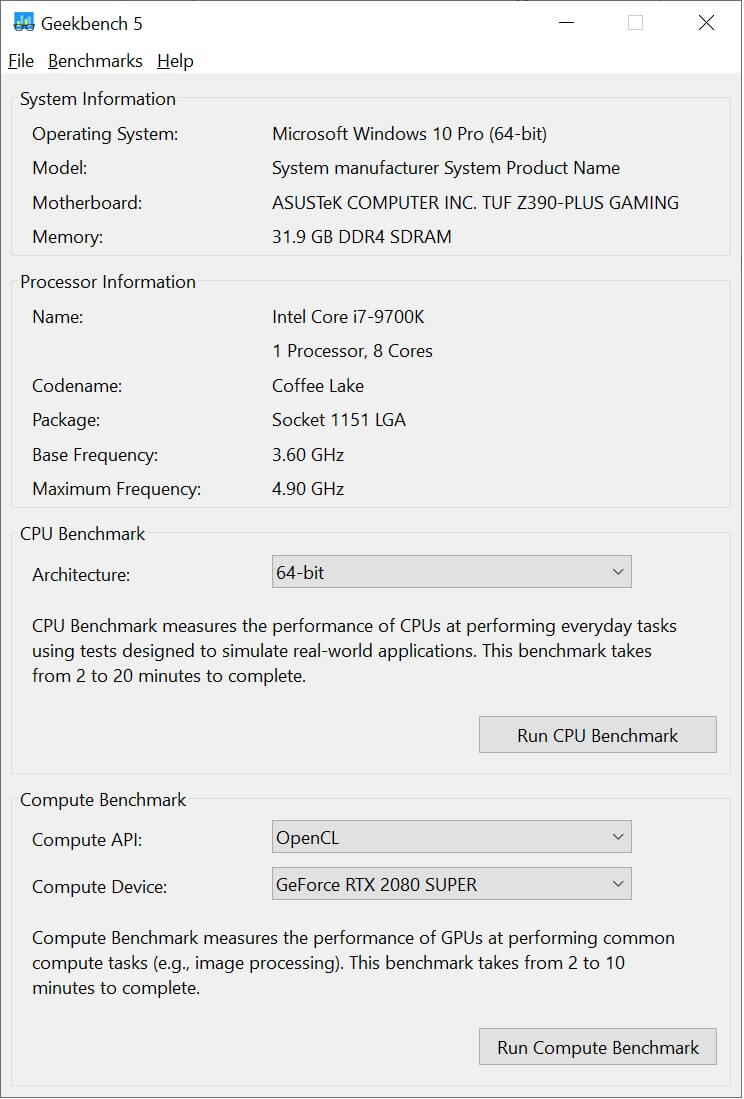
The interface is as basic as they come, and there are no fancy graphics while it’s running. Instead, it quietly runs a series of tests, performing calculations as used in various computational workloads, and displays the results in the form of list of scores.
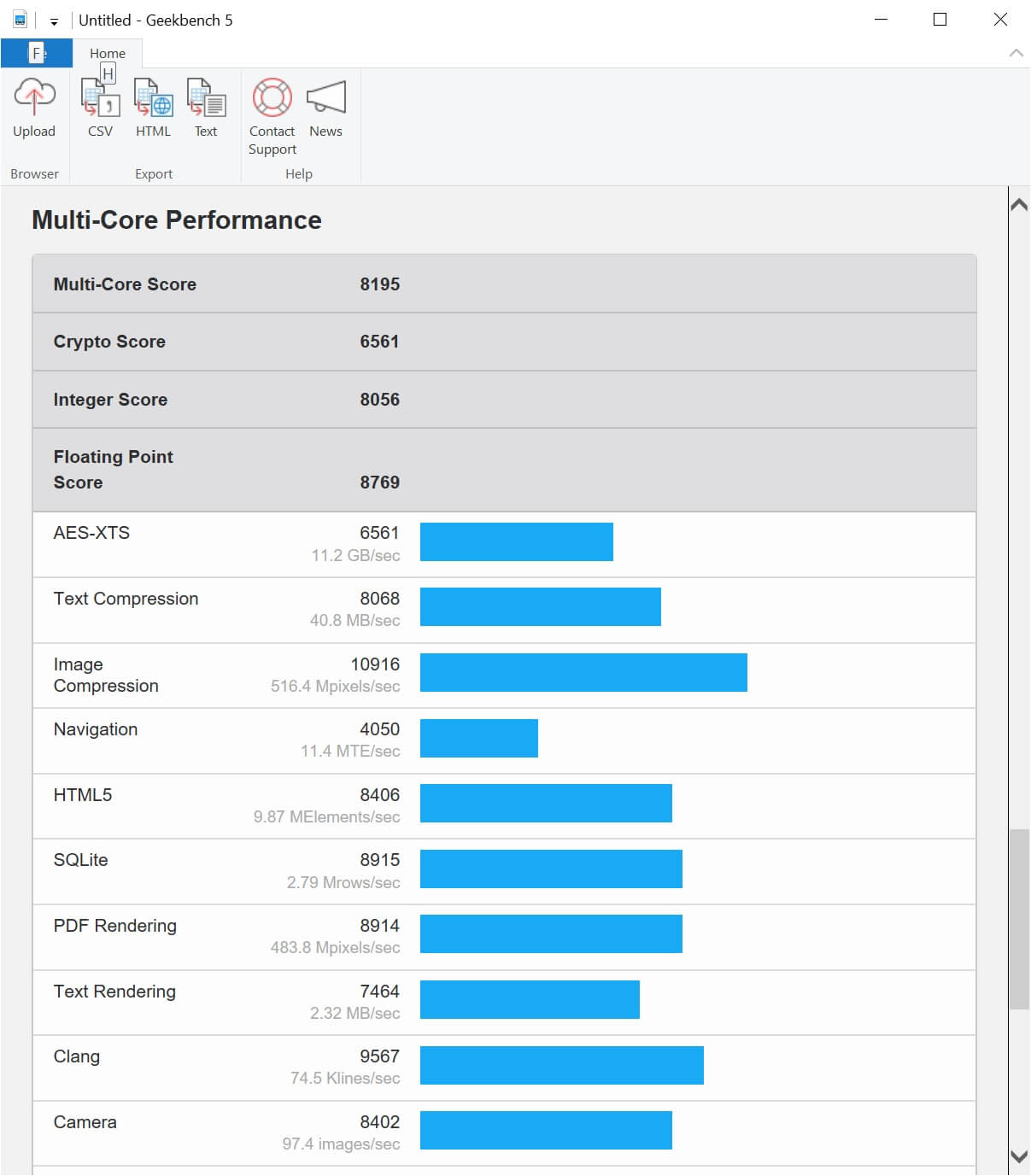
Like many benchmark tools, the results can be uploaded to the maker’s online database, which means you can compare your findings against other systems or share your own.
Geekbench comes as a free, unlimited ‘trial’ version, that does everything you need it to. For $9.95, though, you receive the capability to manage your online results, and for $99.99 you get to fully configure what and how the program is doing (but this is really aimed at commercial use).
Novabench
Download Now from TechSpot | Website: Novabench
If you’re after another multi-platform tester, then you should consider giving Novabench a look. Available for Windows, Linux, and macOS, this benchmark tool offers CPU, GPU, RAM, and hard drive tests.
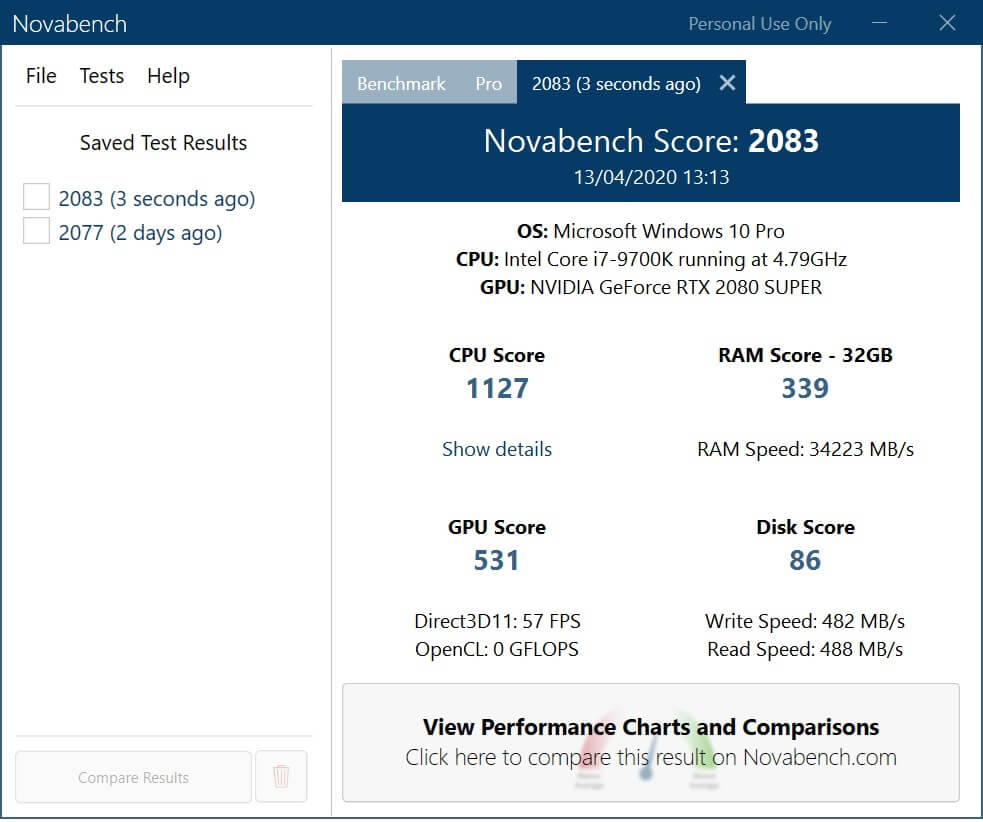
While it lacks the graphical fidelity of the likes of 3DMark or the range of analytical tests that Sandra offers, the whole benchmark is short and sweet (it’s much quicker than Sandra, for example) and there’s an online comparison feature, too. Handing over $19 will get you the ‘Pro’ version of the tool, and for that you get temperature monitoring, a battery wear test for laptops, and more configuration options.
Phoronix Test Suite
What if you want to benchmark your computer (Windows, Linux, or macOS-based), but you don’t want to pay out for the full set of features? Or let’s say you’re a IT professional and you need to remotely test and monitor hardware, what then? Well, it’s simple: open-sourced Phoronix Test Suite is what you need.
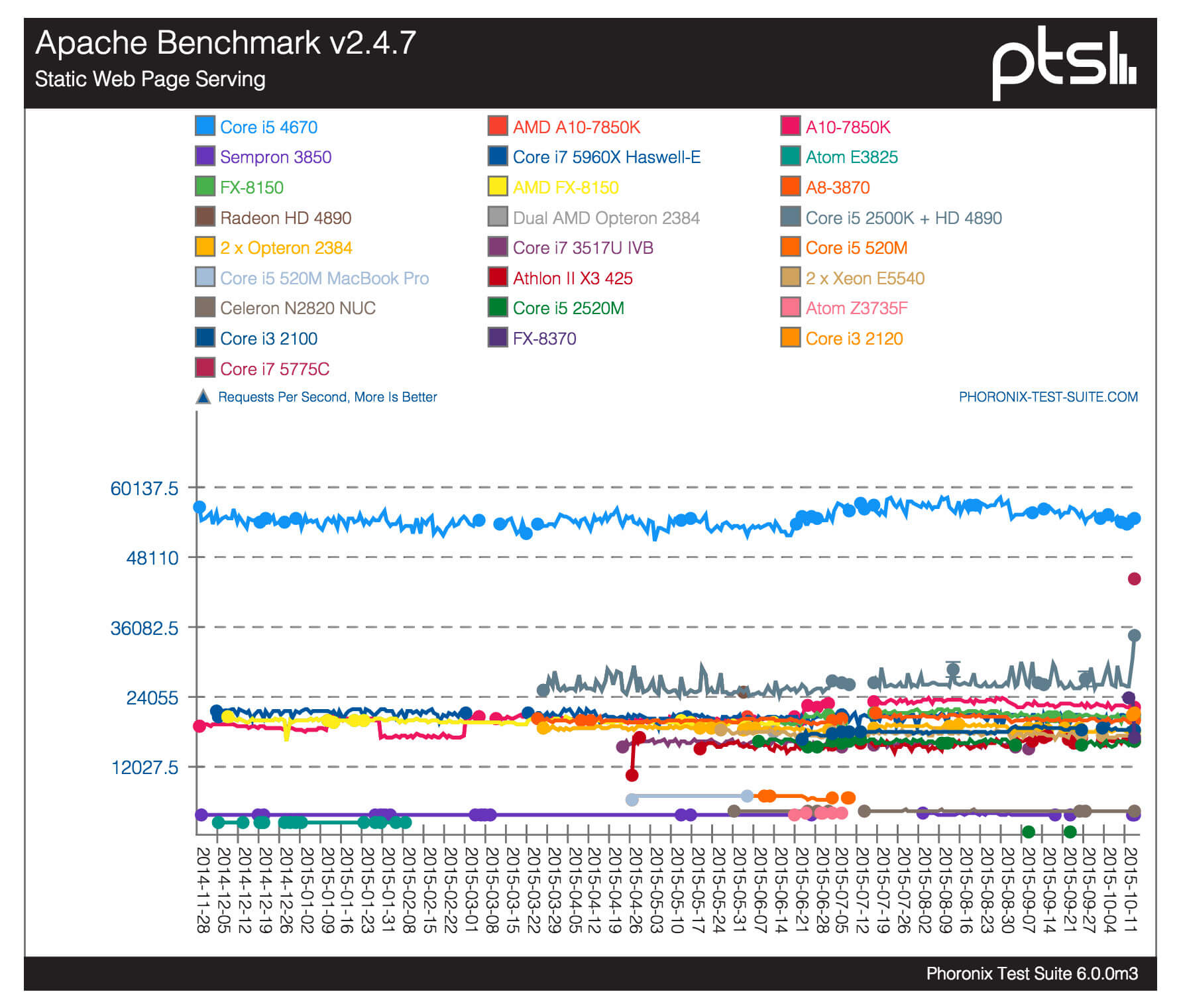
A word of caution is needed though: Phoronix is not for the general, or even enthusiast, consumer. You need to be very comfortable with using a command-line interface, and understand what’s being tested, and how each benchmark works. But if you are a network manager or a system developer, then you won’t find a better collection of benchmarking tools anywhere else.
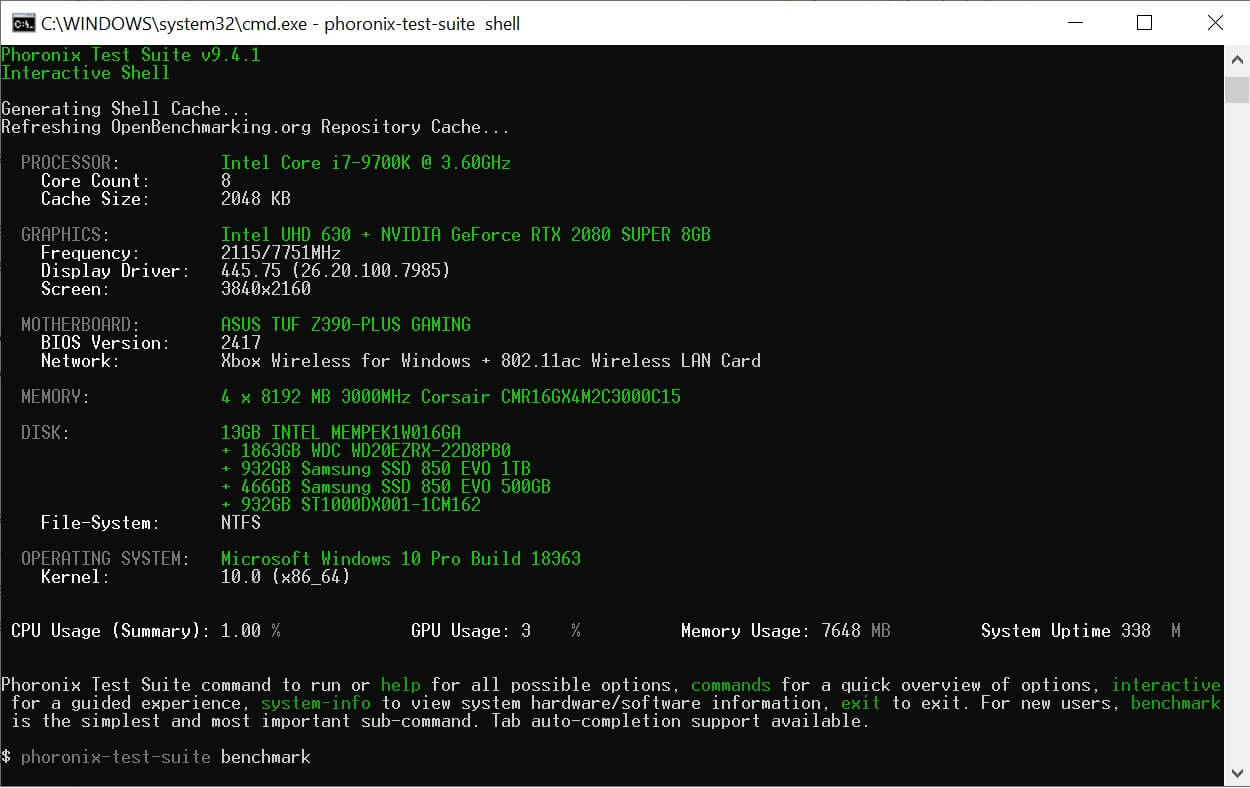
The default download comes with a vast number of tests, but additional ones can be sourced through the supporting OpenBenchmarking website.
Download Now from TechSpot | Website: 7-zip
7-zip is a file compression app, but it just so happens to contain a nifty little testing feature: it creates some junk data and then uses the LZM algorithm to compress and decompress it, without any loss of data. Just go to ‘Tools’, click on ‘Benchmark’, and away you go. Clearly this isn’t a benchmarking tool, but it’s nearly always shown in CPU reviews because it presents a real-world testing scenario.
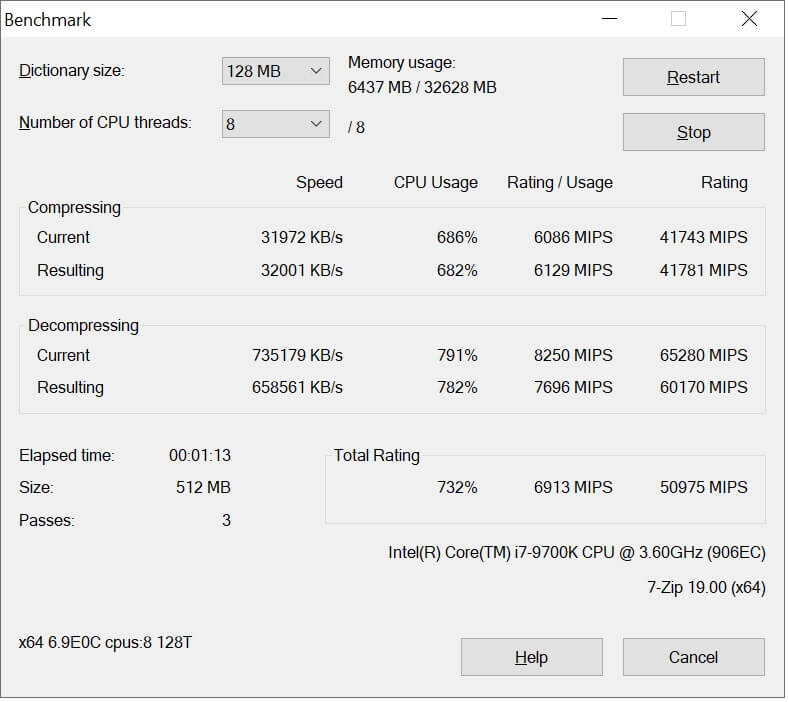
The compression test is good at seeing how capable the cache of the CPU and the system memory are, in terms of bandwidth and latency; the decompression results are more affected by the CPU’s internal structure and how well it manages random, branching integer operations. So if you’re looking to compare these aspects across different makes and models of processors, 7-zip is handy to use and like Cinebench, it’s results are often shown in CPU reviews.
The best part of the program is that there is no cost, and it’s available for Windows and Linux users.
Unigine Superposition
Download Now from TechSpot | Website: Unigine
The next entry in our benchmarking list is actually a collection of programs, all made by Unigine, who have been developing 3D graphics engines for gaming and visualization industries for 15 years. They have 3 graphics benchmarks, but as two of them are a little bit old for modern systems, we’ll just stick with their latest one, called Superposition.
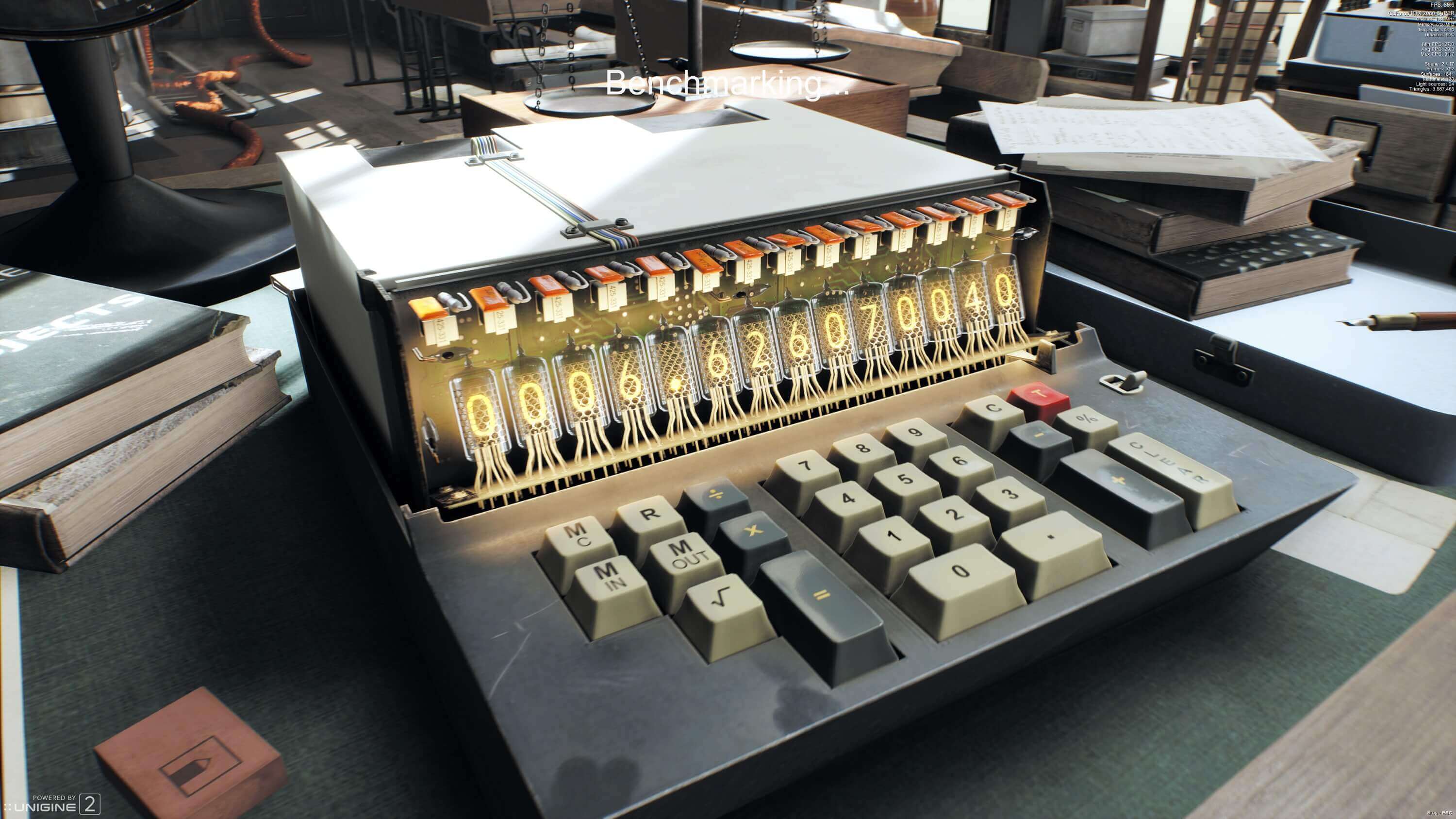
The visuals are nice to watch (some parts of it are pushing 6 million triangles per frame, with 30 active light sources), while the test is running, and like 3DMark, you can set it to render the graphics at a resolution higher than the output monitor’s — it uses a very quick shader routine to scale back down, to fit onto the screen. So if you want to give your GPU a decent workout, then this is a quick way of doing it.

Also like the UL benchmark, you get a score at the end of the benchmark that you can upload and compare. There are versions for Windows and Linux, and the ‘Basic’ edition is free; $19.95 unlocks a stress test that runs through many cycles to see how stable the system is, and allows you to upload your results to Unigine’s leaderboards. If you want more options to running the app and analyzing the results, then you’ll need to get the ‘Professional’ version, which costs a staggering $995, but this really isn’t aimed at general users.
CrystalDiskMark
Download Now from TechSpot | Website: CrystalDiskMark
Where Unigine benchmarks focuses on 3D graphics, this one is all about your storage — specifically, how quickly it can read and write data to them, in various ways. CrystalDiskMark is very basic, but there’s nothing wrong with that.
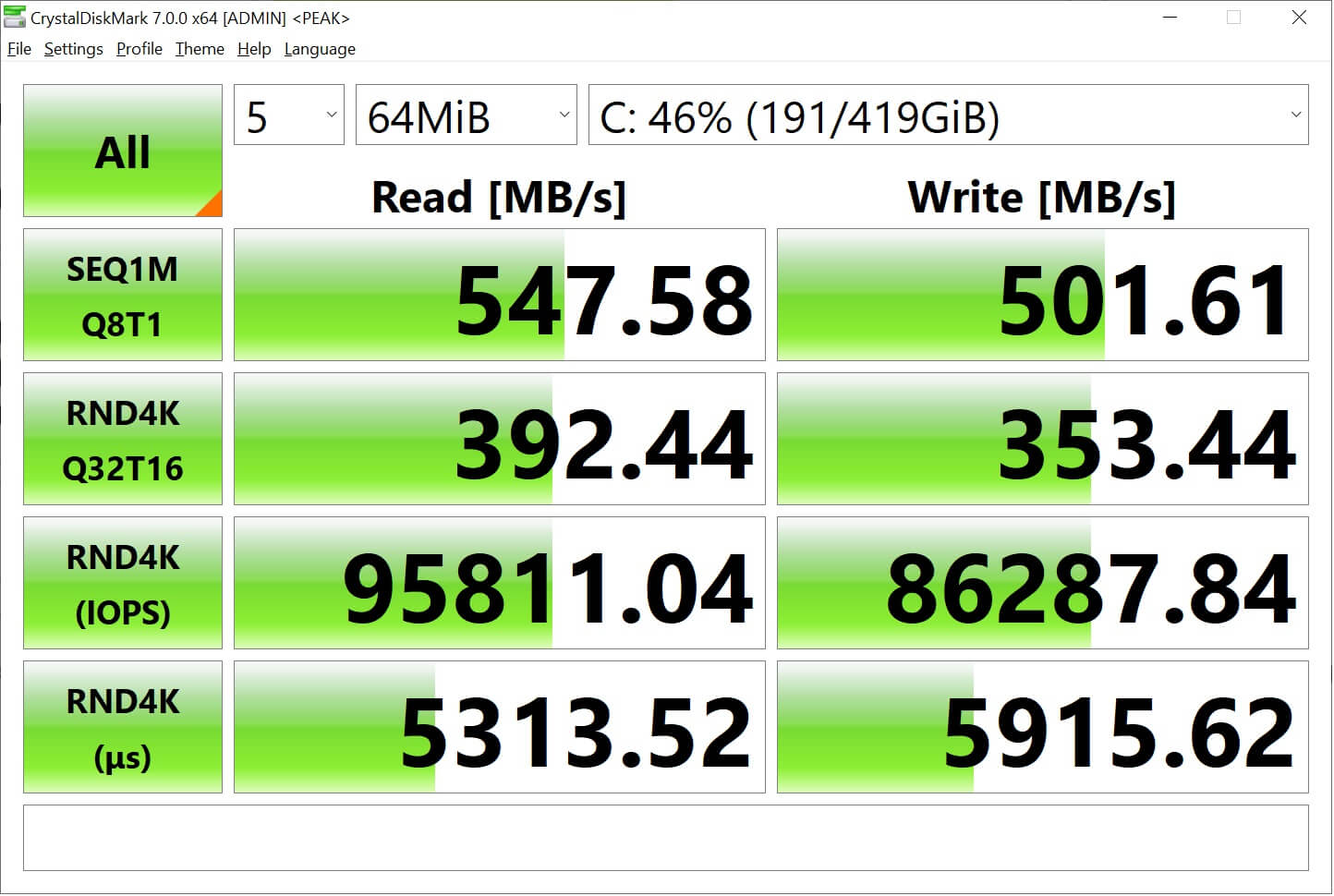
There’s no overall score but the test has a range of settings scenarios, from ‘realistic’ workloads to peak performance checks. The latter is useful for checking that you’ve got everything set up right.
For example, the above results are for a SATA-connected SSD that has claimed sequential read/write figures of 540 and 520 MB/s respectively — the SEQ1M results show that this is pretty much the case.
CrystalDiskMark is free and available for Windows PCs only.
PerformanceTEST
Download Now from TechSpot | Website: PerformanceTEST
No list article should be without at least one controversial choice, and this one is no different! We’ve picked PerformanceTEST by PassMark, not because it does anything badly, but some people don’t like it because of the way it calculates the score in the CPU tests. Fans on either side of the AMD vs. Intel battle will sometimes claim that their favorite model is being unfairly represented, but that’s just the nature of benchmarking. It’s always best to use more than one program to get a good overview of your system’s capabilities.
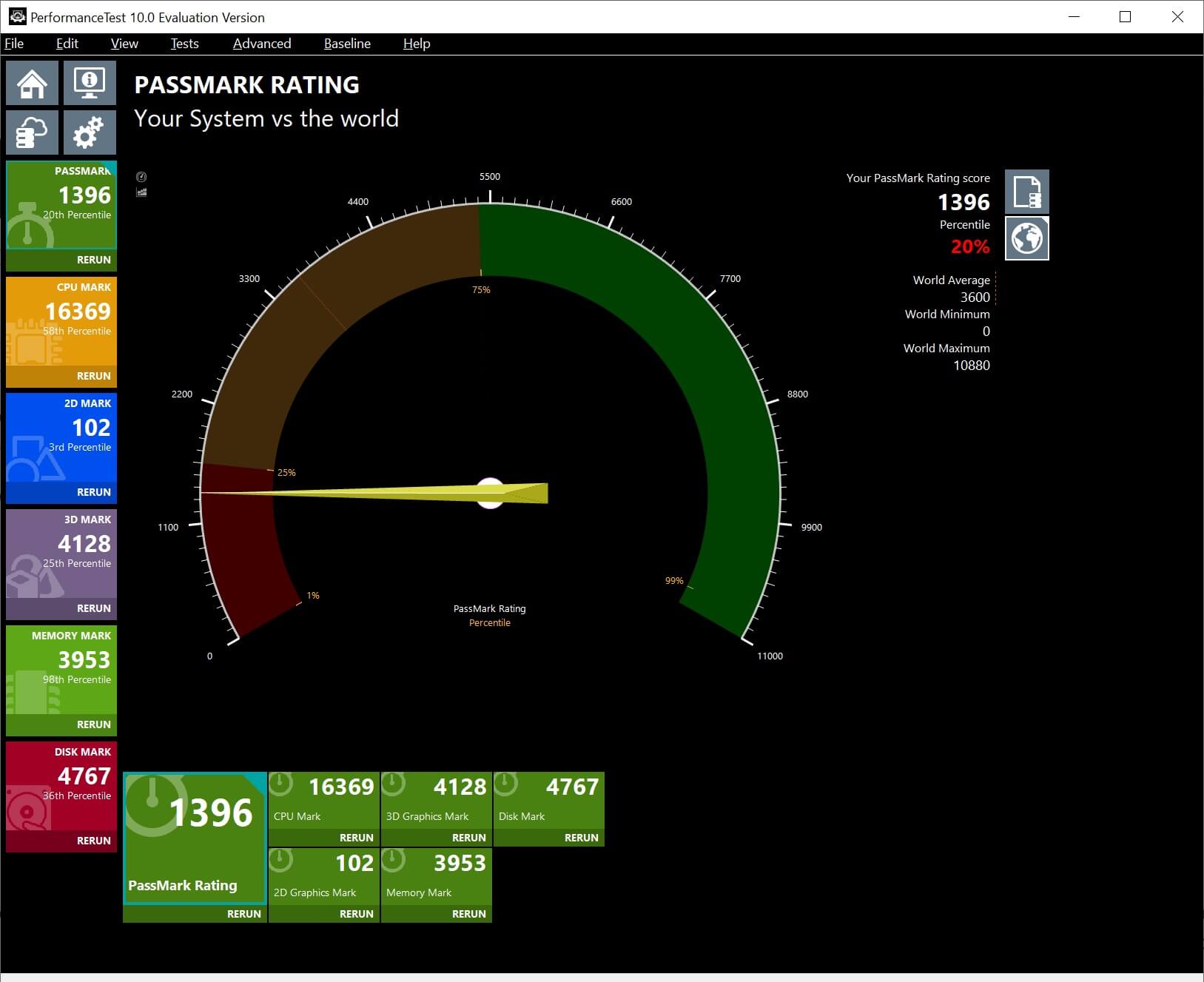
PerformanceTEST runs a decent range of CPU, GPU, RAM, and hard drive tests to generate an overall score, and like so many others, this can be uploaded to an online database and compared to other systems. Some of the graphics tests (2D and 3D gets tested) are cool to watch, if just a little on the trippy side.
The actual controversial part to this benchmarking tool is that there is no real fully-free version: you can have a 30-day evaluation copy, but after that time period, you’ll need to spend $29 to unlock the advanced tests and 12 months of free upgrades, and then another $13.50 to maintain the support. Compared to what SiSoftware offer with Sandra 20/20 or UL with PCMark 10, a time-limited trial version seems a bit outdated. That said, it does offer plenty of information about the tests, and if you examine lots of machines and components, going for the full version isn’t too bad of a deal.
Plenty of Tools
So there you go, plenty of recommended software to analyze, monitor, benchmark, and stress test your computing devices. There are many more out there, but we think these will suit almost everybody’s needs. If you think we missed any great one, feel free to point us in the right direction in the comments.
We also think it’s important to point out that benchmarking a computer can often put it under a load that it may not be stable with. So before testing, always ensure you’ve backed up all of your data, and if things start to look very unusual (e.g. very high temperatures, odd pixels on the screen), stop the program immediately.
And of course, there’s more to benchmarking. read our follow-up guide to best practices, real-life benchmarking using games and how to analyze the results.
Note: This feature was originally published in October 2020. We have revised and bumped it because it’s as relevant today as it was before. Part of our #ThrowbackThursday initiative.












